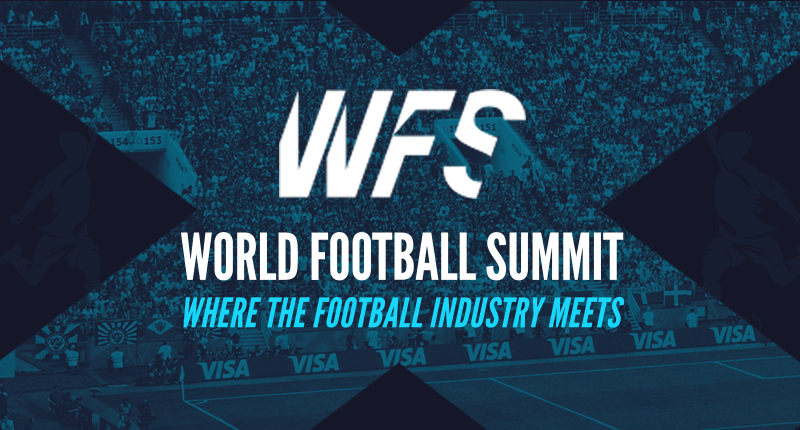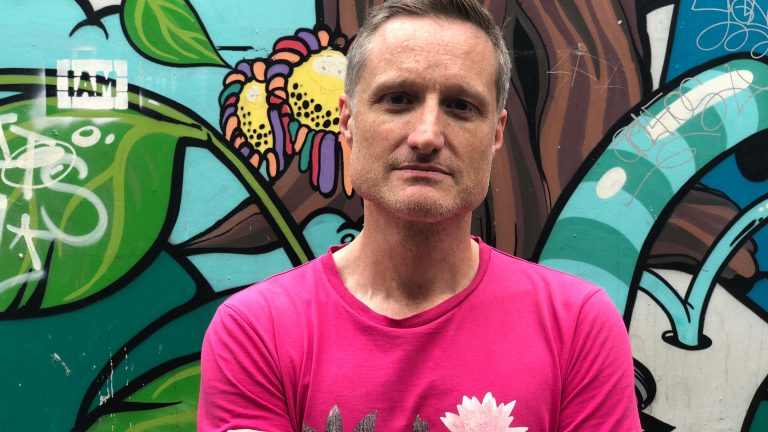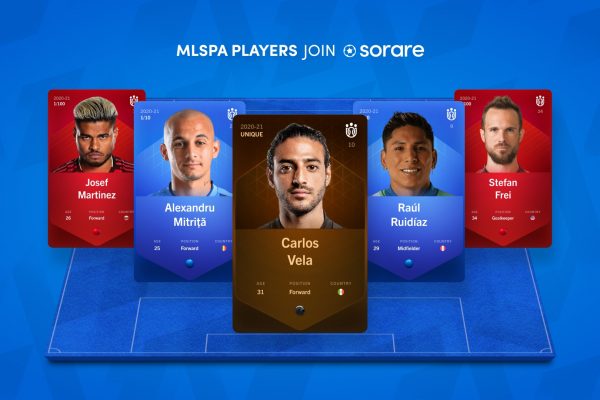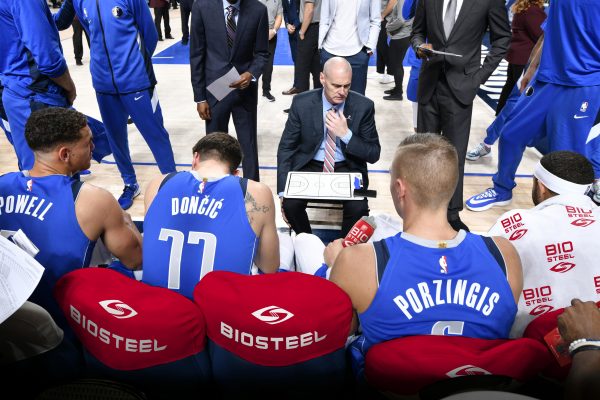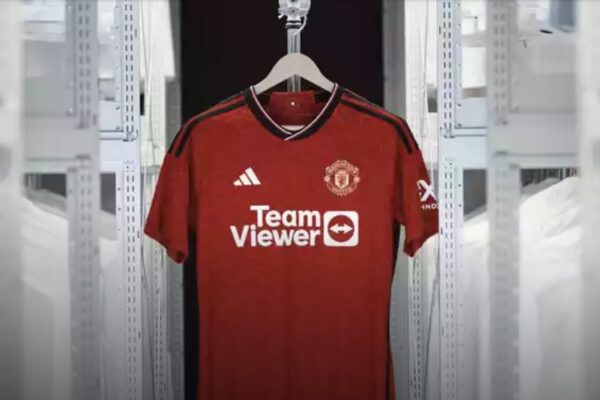Jump Design and Direction, an award-winning design agency has been creating exciting and innovative visual identities with broadcasters, gaming and sport governing bodies like UEFA, FIFA for over 25 years. The Playknox spoke with Russell Hilliard,Company Director / Digital Marketing Adventurer of Jump to know more about them.
Tell us about Jump.
Jump is a design agency that as of 2021 is celebrating 25 years of producing outstanding motion graphics. There are currently 16 people working at Jump, a combination of highly skilled designers, animators and producers.
Before the pandemic we were based in Shoreditch, London – but we are now fully committed to being a permanent remote-working company and our team is spread out around South East England (plus one team member in the Midlands). The directors of Jump first started working together at the news organization ITN, where they ran the commercial design department IDF.
Jump’s clients have evolved organically over the years from news and current affairs (ITV News at Ten), to primetime comedy and entertainment (The X Factor / Who Wants To Be A Millionaire), to major sport event sequences for broadcasters (ITV FIFA World Cup / C4 Rio Paralympics) and now global graphics packages for sport governing bodies (such as UEFA and FIFA).
The recent campaigns you have worked on and are working on.
We are delighted to say we have been really busy over the last two years after an initial scare when the pandemic put the sporting world on hold.
We have been working a lot recently with our long-time client Sport 24, the channel that brings you all the best live sports events when you’re traveling by plane or cruise ship. We’ve just finished an exciting new promo for them called We Don’t Stop, which is the follow up to a Promax Award winning sequence called Back in the Game we made for them last year. But we’ve also created graphics packages for their Olympic Winter Games Beijing 2022 coverage, which featured a rather lovely Winter Dragon, and another last year for their UEFA EURO coverage.
In 2020 / 2021 we worked on the new cricket tournament The Hundred for Progress Productions and ECB (England and Wales Cricket Board). Jump created the Event presentation graphics (those seen on the screens inside venues) and a digital kit which included the motion theory guidelines. Last year, our match graphics for the UEFA EURO 2020 went out after the tournament was delayed a year. We have also worked with UEFA on the UEFA Nations League tournament since it launched in 2018, where we created the tites and match graphics kits. We’ve just been updating this for 2022.
The Champions Ice Hockey League had their big final recently between Rögle Ängelholm and Tappara Tampere. Jump has a contract with Infront Sports & Media to create the titles and broadcast graphics package for the whole tournament. Jump is an official partner and graphics supplier for the Sport Industry Awards. We are hard at work finishing the graphics for the next event which is coming up in May. That is always a really special and fun evening where we get to catch up with lots of clients and colleagues. And this year’s London Football Awards were held last week at the Roundhouse in London, which Jump designed and produced all the graphic branding for.
What are the trends you think will define 2022 creativity wise?
People are still relishing sport being back after missing it for large chunks of 2020 / 2021 due to the pandemic. So there has been a trend of positivity and excitement about appreciating sport. Examples of that were the promos we made for Sport 24 – ‘Back in the Game’ and ‘We Don’t Stop’.
There will also be a continuing importance placed in creating entertainment that sits alongside and integrates with sports. Audiences have a deep passion for their sports as well as the content around it. Sporting federations and broadcasters will always try to create more and more ways to entertain and connect with their current and new audiences. You just have to look at the NFL halftime shows, the live DJ-sets at The Hundred, or the success of Formula One’s ‘Drive to Survive’ on Netflix. Each is a visually impactful continuation of the sport and its culture. With the horrific, unjustifiable Russian attacks on Ukraine we might start to see sports trying to spread a message of being anti-war and pro-peace.
How much has the creative industry evolved when you look back at your 25 years?
The technology in the graphics industry has changed enormously over the last 25 years. When we set up Jump we were designing and animating on very specialist and expensive equipment made by a company called Quantel. This was long before the days of Apple Macs, Maxon C4D and Adobe After Effects which are now standard.
That one animation machine we owned was called a Quantel Hal (prior to this we worked on Quantel Paintbox and Harry) and it cost us nearly £200k which included a Digibeta deck for archiving. We had to have it working 24 hours a day divided up into 3 x 8 hour shifts because we could certainly only afford one. Oh, those early 6am starts were fun in winter! Now Macs and PCs, even though they are still expensive at the top of the range, are much more affordable for designers. That has contributed however to making the industry even more competitive.
In 1996 we were delivering master graphics on digital tape and constantly ordering couriers to whizz packages around London. It used to take ages writing up labels and stickers for the tape boxes and you had to include a detailed log sheet with Timecodes. The internet existed back then but it was very slow and limited. Now pretty much everything we do is delivered online obviously via Wetransfer or DropBox. CGI graphics were also a real specialty back then. We didn’t have any 3D modeling or animating skills in house so we had to go to facilities companies normally based in SOHO. Now we’re producing incredibly high standard 3D CG with our own team and it’s seen as a much more standard way to produce graphics. Even though technology has changed enormously over the last 25 years, our creative processes have pretty much stayed the same. It still normally starts with a blank piece of paper and a pencil.
What makes sport an attractive category?
Sport is an amazing field of graphics to work in. There is so much passion and enthusiasm wrapped up in sport from the players, to the fans in the stadium, to the audience at home. When we create a sequence, we are getting to tap into that energy and we get to help feed the drama and build excitement. There is often amazing footage available to play with too, particularly since HD and now 4K has been developed. Sport also contains an amazing wealth of graphic visuals – from team logos, uniforms, pitch markings, tournament branding etc – there is always lots to be inspired by.
If we’re creating match graphics it’s always a fantastic challenge to make something that communicates information quickly and efficiently but also looks great and is on brand. Often the amount of data we’re trying to lay out can get quite complex. Solving these challenges really appeals to our design skills and personal sports fandom. It’s also very satisfying to know that our work is getting seen by a big audience – and sport can draw in the biggest – particularly if it’s a graphics package being sent out around the world.
What is your process like when you get a project?
Our process always begins with making sure we fully understand the brief and immediately opening up a friendly dialogue with the client. We are a very open, collaborative company, we want the client to feel involved. We don’t go away and hide in a room designing work so it ends up being a complete surprise when the client sees it. There is always a research period after taking a brief. It could be a sport we are not overly familiar with – such as when we worked with the International Biathlon Union a couple of years ago. We needed to spend time familiarizing ourselves with that specific sporting world.
After this research, we will get together internally and brainstorm ideas. We’ll share things that have inspired us creatively and that could be relevant. We will work up a range of rough concepts to show our client that are normally a collection of written treatments, sketches and moodboards. This is not the final pitch but an interim stage to get the client involved and work out which ideas they like best. We then go away and spend more time working up these preferred ideas with storyboards, colour visuals, animatics or even test animations . It can be really time consuming so client input to eliminate any ideas that are missing the mark is really vital to us.
Once an idea is commissioned we enter a pre-production planning stage where the schedule, team, budget and production methods are locked off. Then it’s a case of getting heads down and making it. We always make sure there are plenty of client feedback points in the schedule. Often fixed weekly meetings are set up for longer projects. Delivery of a project is also a really important stage. Files need to adhere to the correct technical specifications and be named correctly. Kits need to be checked and double checked. Sometimes we need to make line-up tapes and detailed log sheets before they are uploaded to the client. Maybe not the most exciting part of a job but a really important one to be accurate on.


